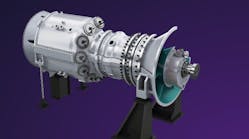Blast from the Past proving true: New Year's Forecast on Top Five Energy Industry Trends for 2022
(EnergyTech Senior Editor's Note: Teresa Hansen wrote this at the very end of 2021, but these column has proven to be prescient musings on the direction of the C&I Energy Transition. AI and H2 are on the rise. In fact, passage of legislation such as the recent IRA, which allocates $350B+ for further development clean energy technologies such as microgrids and hydrogen, are making the point even finer. So, we thought we'd reshare this blast from the not too distant past.
By Teresa Hansen, Vice President of Content, Energy, at EnergyTech and parent Endeavor Business Media
Happy New Year, everyone! It’s hard to believe it’s already 2022. As crazy as 2020 and 2021 were, they seemed to fly by. I’m happy they’re behind me, but sorry that we’re entering another year where COVID 19 is still in the spotlight. As we start our journey into 2022, I predict that we will continue to be impacted to some degree by the pesky virus that won’t go away. That’s a pretty easy prediction, so I’ll move on to some others that may or may not pan out. Below are the five trends I believe will be at the top of the list in 2022 for North American grid owners and operators.
Decarbonization
Reducing carbon emissions has been driving the energy transition for most of this century and will continue to do so, but the pace picks up in 2022. The retirement of central station coal-fired power plants coupled with the addition of more intermittent renewable energy is the main driver. The Energy Information Administration (EIA) expects about 65 GW of coal power to be retired between now and 2030, and it reports that nearly 90 GW has already been retired since 2011. The latest EIA data also predicts renewable energy in the U.S. will make up 50% of the energy generation mix by 2030. In 2020, it made up just under 20%. When you compare how long it took for the county to get to 20% vs. only a decade to reach 50%, it’s easy to see that the rate of renewable penetration on the grid will require a lot of innovation and investment in electricity delivery systems. So far, grid owners and operators have managed to keep up, but as the pace increases, new technology will be required, and I expect to see more innovation in this area in 2022.
Electric Vehicles
While most automobiles on the road are still fueled by gasoline, enthusiasm for electric vehicles (EVs) is spreading fast. Most every auto manufacturer has already introduced or plans to introduce mass produced EVs in 2022.
Data recently released by Rystad Energy, a global independent energy research and business intelligence company, predicts that global EV sales will reach 7 million cars in 2021, which is more than double 2020 sales of 3.2 million. It also reported that when purchases of plug-in hybrid EVs and battery electric EVs are combined, about one in every 10 cars purchased in 2021 falls into that group. That also doubles 2020 sales.
The U.S. had 1.68 million charging points at the end of 2020, according to BloombergNEF. While that’s a start, it is far from enough to support the number of EVs expected to hit the road in this decade. For most grid owners and operators, EV charging will require upgrades and/or new infrastructure to accommodate the additional power that will be needed, as well as move that power to the right places. In recent weeks, I’ve seen several news items in my inbox concerning the need to mine more lithium to meet the demands of EV battery suppliers. I’ve also seen news that highlights environmental groups’ concerns about lithium mining practices. Will these be obstacles that could change the EV trajectory, probably not in 2022.
Hydrogen
There has been a lot of talk about hydrogen in the last few years. In fact, it is one T&D World readers’ favorite topics. Will vehicles fueled by hydrogen gas made from renewable energy become an option that changes the EV trajectory?
Eventually, maybe. Green hydrogen (hydrogen made using renewable energy) that can be used as fuel to make baseload power (electricity that can be added or removed from the grid when needed) could also become an option. Hydrogen-fueled power could not only add clean energy to the grid, it also could be used to stabilize the grid when solar and wind are not available, or even to replace intermittent renewables. I don’t expect this to happen in 2022, but I do expect hydrogen to continue to be a big topic in 2022 and for technology development to continue.
Infrastructure Upgrades
Much of today’s electricity delivery infrastructure is old and obsolete and must be upgraded. In many cases, T&D grids are operating in ways they were never designed to operate. I tip my hat to not just the T&D grid owners and operators, but also the many solution providers that have worked with utility engineers to create products and solutions that are keeping today’s infrastructure operating reliably.
In my last Global Viewpoint column, I wrote about the Infrastructure Investment and Jobs Act, so I won’t say much about that, but I believe the infusion of this federal money in 2022 will speed up infrastructure upgrades and help fund additional technology development, which is a must if the T&D grid is going to keep up with the energy transition. In addition, I think we’ll see more utilities undergrounding their distribution lines to improve not just reliability, but also resiliency.
Advance Digital Technology/Analytics
This final trend dovetails into the first four. Transitioning to a decarbonized gird will require data collection and advanced analytics that can manage large amounts of intermittent energy, give electricity to and take electricity from EVs, efficiently create hydrogen from renewable energy, and build a T&D infrastructure where digital sensors collect data and computers analyze it and make operational decisions.
In 2022 and beyond, we will see more of the grid being controlled and operated by artificial intelligence and machine-to-machine learning. More data, faster networks, and more processing speed will augment human decisions and provide the capabilities needed to create the grid of the future.





